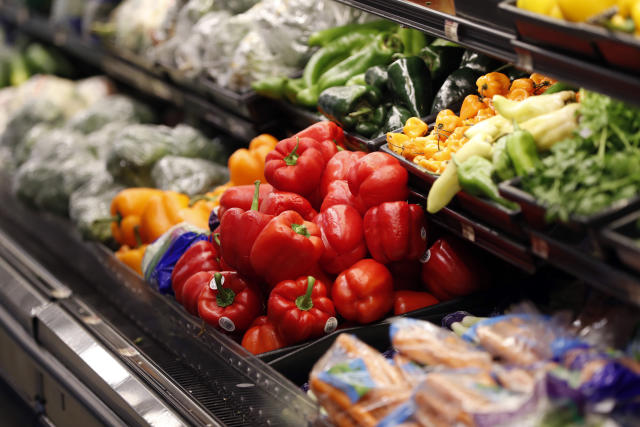
Canada’s inflation rate slowed down to 4.3 per cent in March, according to Statistics Canada’s latest Consumer Price Index (CPI) report. However, Canadians may not see significant price drops at the grocery store as food prices, including both groceries and food from restaurants, continue to rise. In March, food prices increased by 8.9 per cent year-over-year, a slightly slower pace compared to the 9.7 per cent increase in February.
The report revealed that restaurant food prices increased by 7.2 per cent in March, with the cost of fast food and takeout jumping by 8 per cent. Meanwhile, the price of food purchased from grocery stores increased by 9.7 per cent, with the slowdown attributed to lower prices for fresh fruit and vegetables. This marks a slight pullback from the 10.6 per cent jump recorded in February.
Comparing the data to the U.S. Consumer Price Index (CPI) figures released recently, CIBC economist Andrew Grantham noted that while food price inflation slowed in Canada, prices continued to rise on a month-to-month basis, which contrasts with the U.S. data.
A breakdown of the year-over-year price increases for food from Canadian grocery stores in March reveals that meat prices increased by 6.6 per cent, dairy products by 7.3 per cent, cheese by 4.9 per cent, bakery products by 14.2 per cent, fresh fruit by 7.1 per cent, apples by 15.8 per cent, oranges by 5.1 per cent, fresh vegetables by 10.8 per cent, lettuce by 8 per cent, tomatoes by 10.9 per cent, potatoes by 11.4 per cent, eggs by 11.8 per cent, fresh milk by 6.7 per cent, pasta products by 14.2 per cent, frozen food preparations by 14 per cent, fresh or frozen poultry by 10 per cent, processed meat by 6.3 per cent, coffee and tea by 11.1 per cent, edible fats and oils by 19.3 per cent, and condiments, spices, and vinegars by 11 per cent.
The rising food prices in Canada pose concerns for consumers, as they impact the overall cost of living and household budgets. Factors such as supply chain disruptions, increased transportation costs, and changing consumer demand due to the ongoing COVID-19 pandemic have contributed to the upward pressure on food prices. The effects of inflation on food prices are expected to continue to be monitored closely, with economists and policymakers keeping a close eye on the situation.
In conclusion, while Canada’s inflation rate slowed down in March, food prices continue to rise, albeit at a slightly slower pace compared to the previous month. The increases in food prices, including groceries and restaurant food, pose challenges for Canadian consumers and are expected to be closely monitored in the coming months.